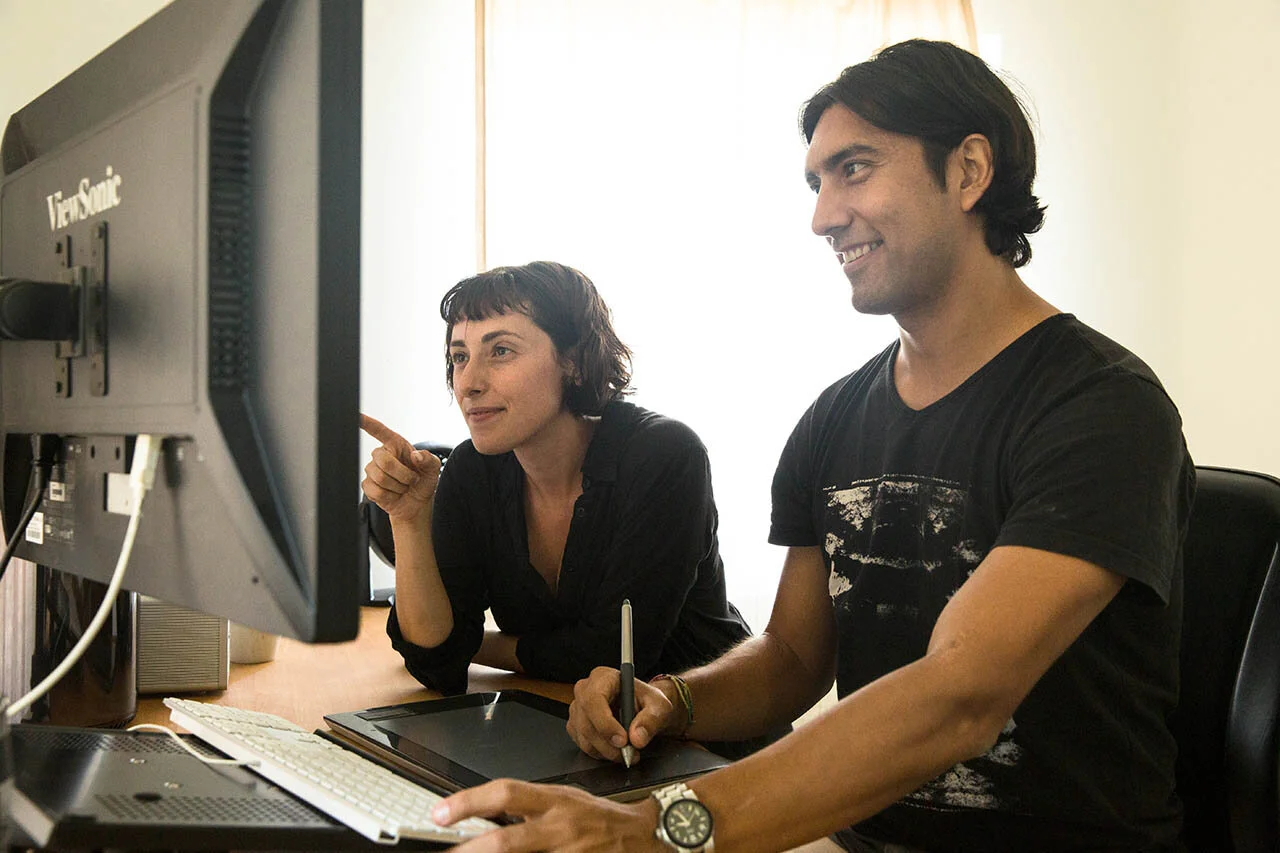Avid: The Editorial Process Of ‘Olive’ (Part 4)
Careful Camera and Talent Rehearsal on Set Helped Speed Up the Editorial Process of ‘Olive’
In this fourth part about ‘Olive’, the post-apocalyptic fairy tale that tells the story of the last man alive and his undernourished olive tree, we step inside the edit bay. I’ll share my experience as editor and storyteller, as we rewrite the ‘Olive’ narrative in post, as well as give you a sneak peak at the official ‘Olive’ trailer.
Cinematographer Sara Ross-Samko and writer/director Aaron Martinez working on ‘Olive’
Olive’s post production life starts weeks before principle photography. We ran tests with Fotokem on Kodak 7219 16mm stock, shooting a thin foggy negative and processing 100% bleach bypass to desaturate the image while boosting the contrast and grain. The dailies were digitally scanned to high-resolution DNxHR files and synched with production sound at Efilm by colorist Ben Estrada, who helped us refine our look leading up to production. Editing on Avid Media Composer 8.3, I quickly copied the MXF files to my Avid MediaFiles folder, opened the bins and started to organize my material.
Being on a tight budget yet bull headed enough to shoot on film; we rehearsed carefully for talent and the camera team before we ran a frame so you can say the bad takes were cut on set. I received few, technically clean takes so it was easy to start laying clips into the timeline. The processing looked fantastic from the start with lovely grain that danced across my monitor. In the official trailer, you can see just how visually stunning ‘Olive’ is shaping up to be.
The first cut was assembled in one night running a little over twelve minutes on a ten page screenplay. It was clear certain production gags would need to be significantly trimmed. ‘Olive’ has a hefty dose of practical effects and on set trickery. One specialty piece scripted as “the mechanical aqueduct” plays a major role in the screenplay, but didn’t quite come off as dynamic on screen as the surrounding environment.
Trimming the two aqueduct sequences and the excess “shoe leather” brought the cut quickly down to around 10 minutes. At that point, we had a good sense of the story and set out to get our first round of notes from friends and fellow filmmakers. We were pleased to hear that the sample audience believed the world we created, but there was definite confusion. Some found the main character’s only monologue disrupting while others simply thought the filmed opened overly dark and ominous.
I sat with my co-producer Elliot Williams and cinematographer Sara Ross-Samko to discuss the story notes and we found most issues centered around the introduction of our main characters in the first scene. I went back to the editing room and cut out a large chunk of the opening third of the film. I watched the cut and realized it played faster, funnier and more intriguing then scripted, but at a price.
Overall the cut was more entertaining, but by trimming certain moments in the first third, other elements in the story seemed “tacked on”— mainly the exciting stop motion animation scenes. We had spent months designing, redesigning and polishing up a mangy, pesky fly to play the antagonist of the film and it was getting dangerously close to the cutting room floor. We shared refined edits and although the feedback was evenly mixed, there was a legitimate argument to remove the stop motion flies from the film completely.
We met with our brilliant stop motion animator Nick D’Agostino to discuss the remaining animation work and the possibility of cutting the flies from ‘Olive’. Instead of getting the ax, Nick inspired a more rounded antagonist and hope for a brighter future.
Get more in-depth information about this project on the website of Olive, and follow the adventures of crew and cast on Twitter and Instagram.


